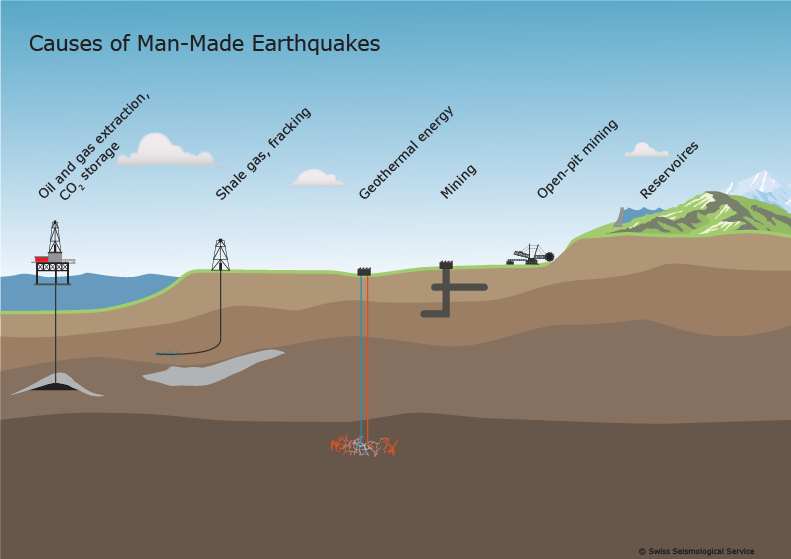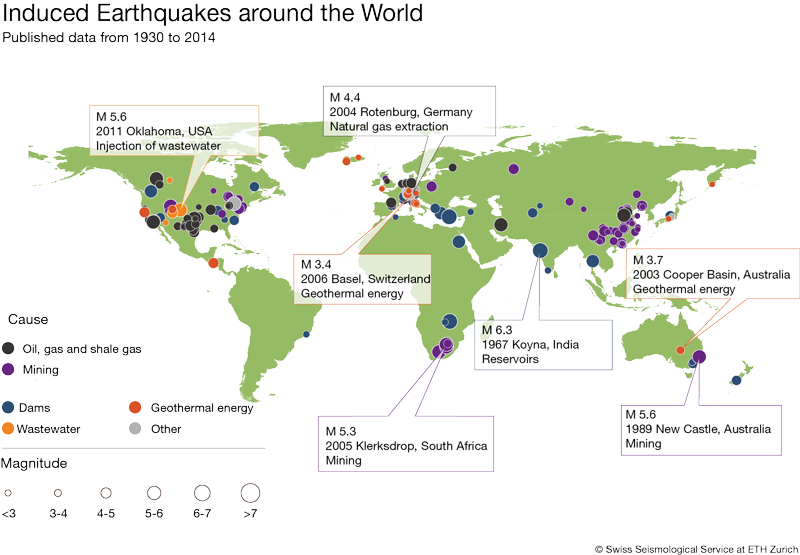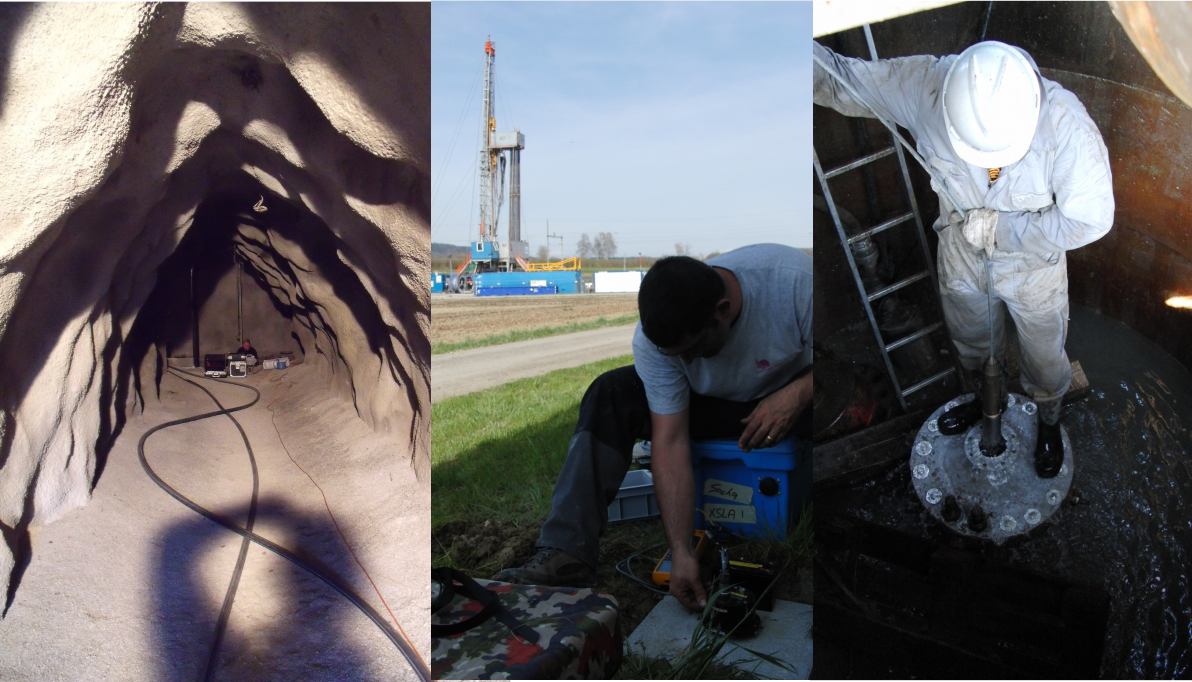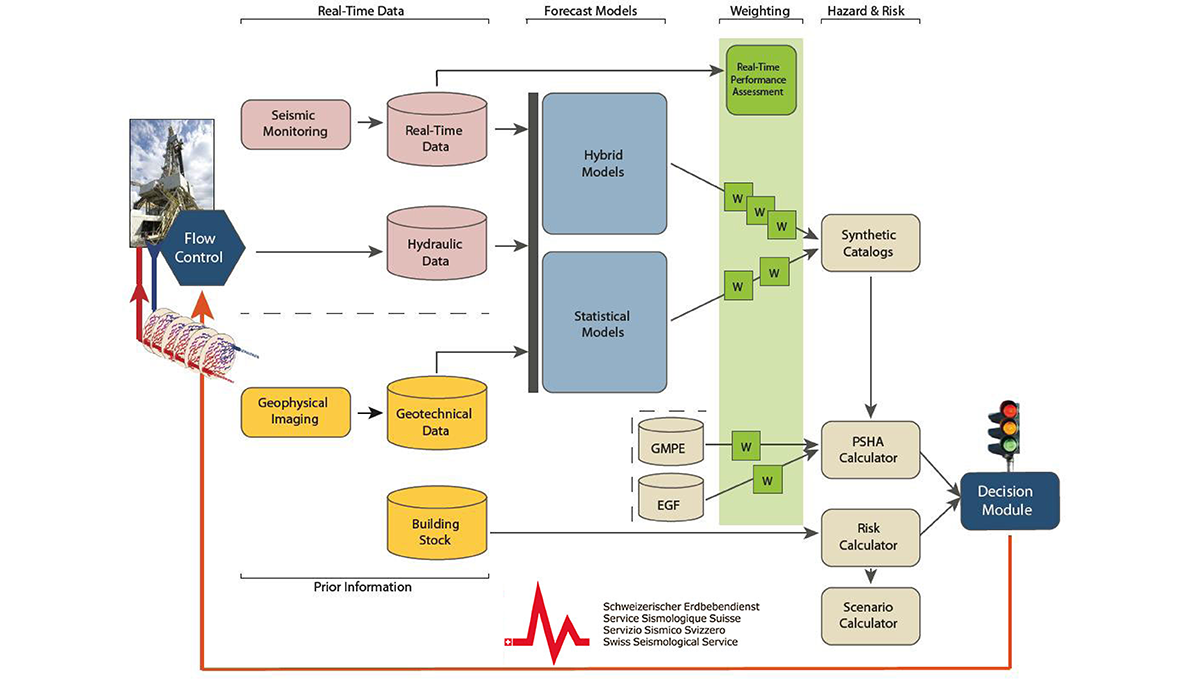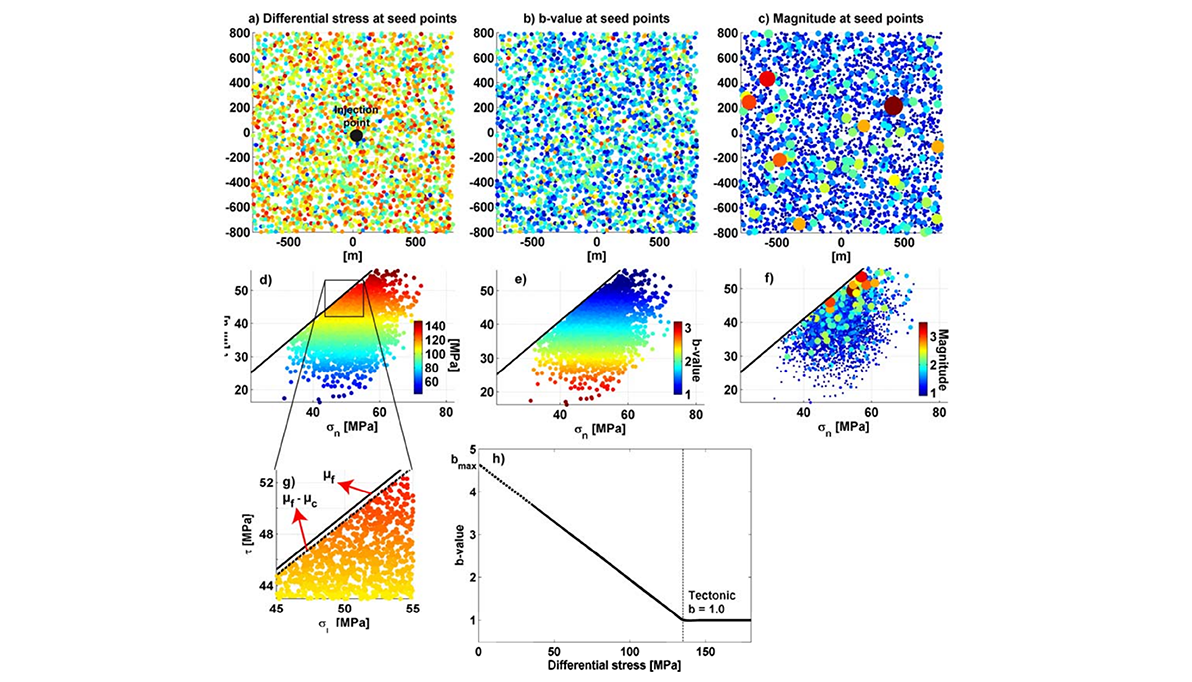Induced Seismicity
Man-made earthquakes are referred to as induced seismicity. In general these are tiny rupture processes (microearthquakes) that occur in all kind of geotechnical operations, and can only be detected by highly sensitive instruments. Occasionally, however, induced earthquakes are strong enough to be felt or even to cause damage in their epicentral areas. This is why induced seismicity has to be considered a non-negligible risk in larger-scale geotechnical operations, especially in densely populated countries like Switzerland. The processes and conditions underpinning induced seismicity are still not sufficiently well understood to make useful predictions as to the likely seismic response of the underground to these geotechnical operations. The SED's research group on induced seismicity (INDU@SED) tries to close this knowledge gap by addressing the problem form various angles.
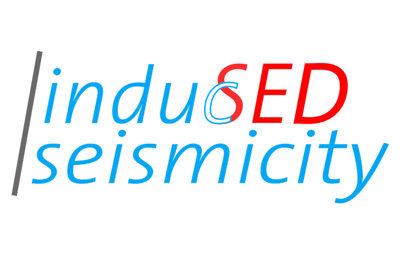
Observational and experimental studies
Existing case histories of injection induced seismicity date back to the 1970ies but are often not well documented, or not open for research. A fundamental part of our research is therefore to collect data sets in high resolution and quality, document them scientifically and make them available to research and teaching. For this purpose we operate an instrumentation pool and develop new methods to improve the detection and analysis of microearthquakes and small changes in the subsurface.
Besides pure observational studies INDU@SED is strongly involved in experimental studies on injection induced seismicity ranging from lab scale (cm) to the field scale (km). On the small-scale experimental conditions can largely be controlled and experiments repeated multiple times. Results of these experiments help us to develop injection procedures for the field scale that optimize the stimulation result and minimize the risk of induced earthquakes.
Numerical modeling of induced seismicity
Key for understanding the processes underlying induced seismicity is to test conceptual models against observations. INDU@SED uses numerical modeling for this task. We develop software that couples fluid flow in porous and fractured media with thermo-hydro-mechanical models and statistical and physical earthquake modes. The hydro-mechanical and seismological predictions of our model can so be compared with observed data, and the model parameters calibrated to different experiment conditions. This approach has been successfully applied to model injection induced earthquake sequences in hindsight (e.g. Basel, Soultz-sur-Forets), and will be used to study possible future scenarios for deep geoenergy application in Switzerland.
Real-time estimation of induced earthquake risk
A major goal of our work is to develop an Advanced Traffic Light System (ATLS) for fluid injection experiments. Based on the observed seismological and hydraulic data and the planed injection scheme, this system shall be able to predict the probability that an earthquake damage sum M is exceeded in the next X hours (seismic risk). For this we need to run our numerical model in real time and have to continuously calibrate it to the observed seismological and hydraulic data. Based on the predicted seismic risk, predefined actions can be taken by the operators several hours before reaching unacceptable risk levels.
In contrast to conventional traffic light systems, which are based on fixed predefined earthquake magnitude or ground motion thresholds, the ATLS automatically adapts to dynamic changes in the seismic response of the underground. In this way, we hope, it is not only possible to stop injection early enough to avoid unacceptable damage but also to define strategies how to proceed in operation after a certain alarm level was triggered.
Scientific cooperation and consulting
We maintain close scientific cooperations with national and international partners from academia and industry. To further fertilize this exchange INDU@SED hosts an international workshop on induced seismicity in Davos every two years.
Consulting Swiss cantonal and federal authorities in all aspects of induced seismicity has become a major task for INDU@SED. As part of this work, which is supported by the Swiss Federal office of Energy (SFOE) and SwissEnergy, we develop best practice guidelines and foster inter-cantonal standards for handling induced seismicty in geothermal projects. Read more about the SED's project GEOBEST-CH.
